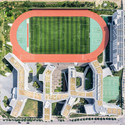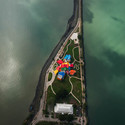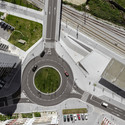
In celebration of Earth Day, we invited Benjamin Grant—founder of the Daily Overview—to select the five "overviews" which he considers to be among the most inspiring that his platform has shared. The image above, taken on Christmas Eve in 1968 by astronauts of NASA's Apollo 8 mission is, according to Grant, "believed by many to be the first "overview" of our planet, captured by astronaut Bill Anders." This photograph dramatically pulled into focus the simultaneous magnificence, intricacy, and terrifying fragility of the planet we inhabit. Since that moment the advent, acceleration, and accessibility of satellite imagery has made one thing abundantly clear: that humankind has had a considerable effect on Earth, for better or for worse.
























